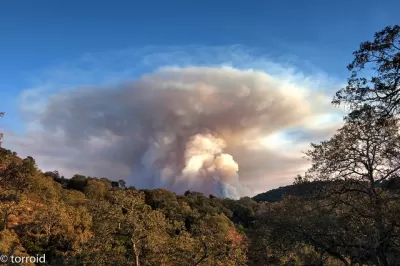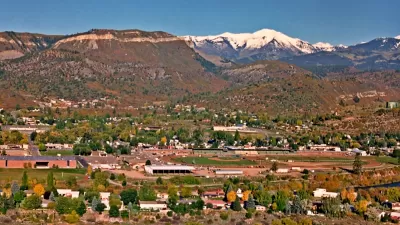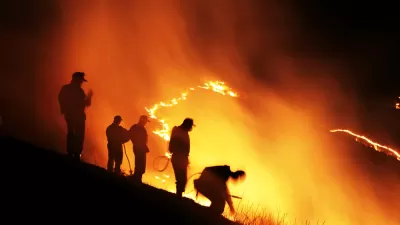To fight increasingly devastating wildfires, government officials and landowners must develop new strategies that proactively address the biggest risk factors.

After another devastating fire season, three new scientific papers outline a plan for "how land managers and policymakers can move from passive to proactive wildfire and forest management," writes Kylie Mohr.
As climate change intensifies wildfires across the West, officials can reduce some of the impacts through a variety of strategies.
These include thinning dense forests that haven’t recently burned, removing some flammable shrubs and bushes, allowing wildfires to burn when conditions are appropriate, and ramping up Indigenous fire stewardship practices, including prescribed burns. If forests are managed well, they’ll still burn — but the fires won’t be so devastating.
The papers, which present facts and misconceptions about a laundry list of management practices, could help landowners and government agencies develop more effective fire management plans. The challenges, writes Mohr, are many: "getting vast numbers of private landowners to work together and understand what they need to do, dealing with federal and state regulatory barriers, permitting red tape, an insufficient federal workforce, a lack of funding, the risks stemming from liability and insurance policies, and a deeply ingrained fire suppression mentality."
Wildfires have grown more severe as climate change worsens 'fire weather' conditions and sprawl puts more communities at risk. Experts suggest that smarter urban growth policies such as infill development and formalized guidance for development in fire-prone areas can mitigate the risk and reduce the damage caused by wildfire.
FULL STORY: Why fire experts are hopeful

Trump Administration Could Effectively End Housing Voucher Program
Federal officials are eyeing major cuts to the Section 8 program that helps millions of low-income households pay rent.

Planetizen Federal Action Tracker
A weekly monitor of how Trump’s orders and actions are impacting planners and planning in America.

Ken Jennings Launches Transit Web Series
The Jeopardy champ wants you to ride public transit.

Washington Legislature Passes Rent Increase Cap
A bill that caps rent increases at 7 percent plus inflation is headed to the governor’s desk.

From Planning to Action: How LA County Is Rethinking Climate Resilience
Chief Sustainability Officer Rita Kampalath outlines the County’s shift from planning to implementation in its climate resilience efforts, emphasizing cross-departmental coordination, updated recovery strategies, and the need for flexible funding.

New Mexico Aging Department Commits to Helping Seniors Age ‘In Place’ and ‘Autonomously’ in New Draft Plan
As New Mexico’s population of seniors continues to grow, the state’s aging department is proposing expanded initiatives to help seniors maintain their autonomy while also supporting family caregivers.
Urban Design for Planners 1: Software Tools
This six-course series explores essential urban design concepts using open source software and equips planners with the tools they need to participate fully in the urban design process.
Planning for Universal Design
Learn the tools for implementing Universal Design in planning regulations.
Heyer Gruel & Associates PA
Ada County Highway District
Institute for Housing and Urban Development Studies (IHS)
City of Grandview
Harvard GSD Executive Education
Toledo-Lucas County Plan Commissions
Salt Lake City
NYU Wagner Graduate School of Public Service





























